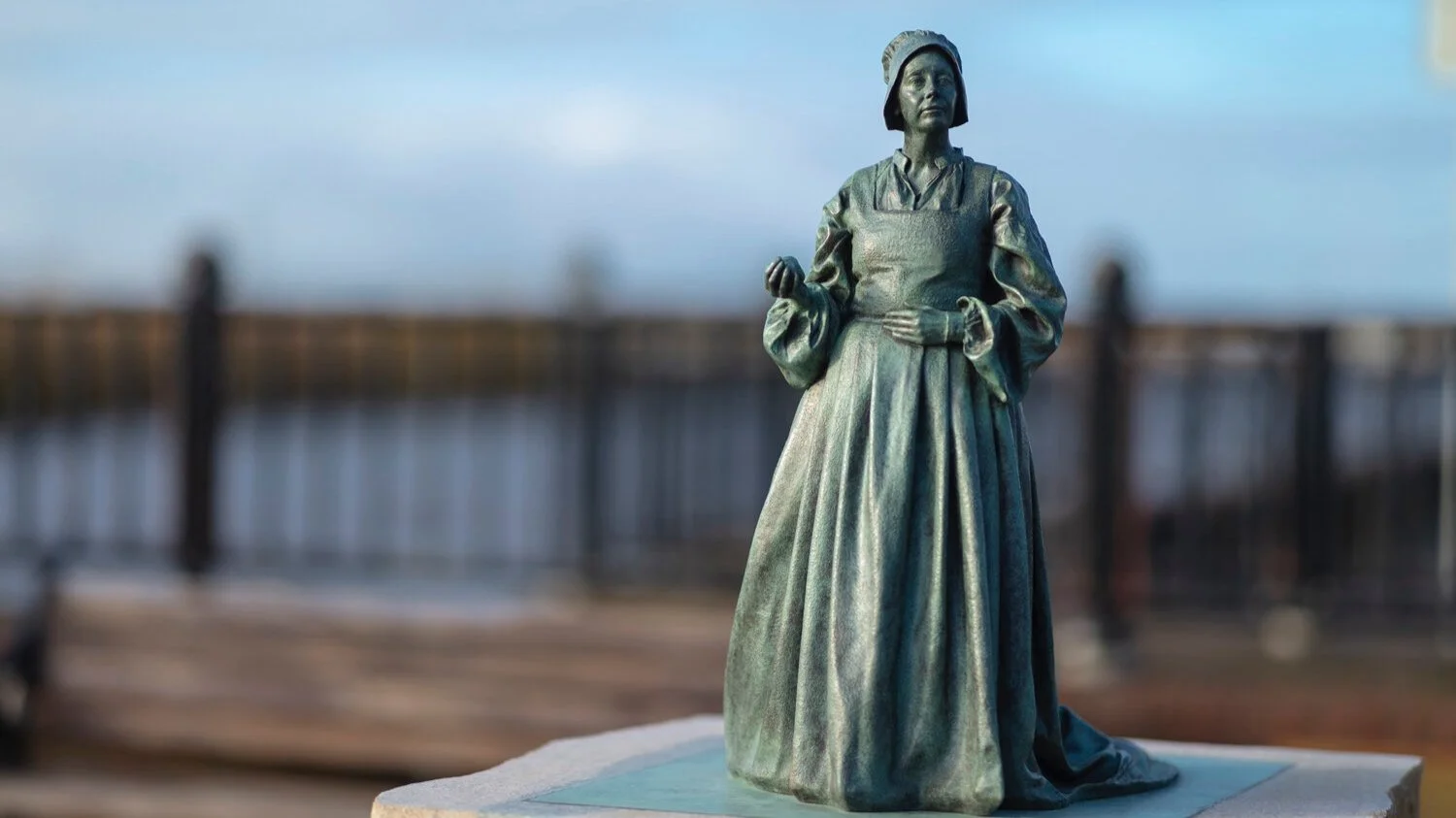
About
Historic hand processes, delicately preserved in bronze
Artistic - Working from The Garden Studio on the Derbyshire / Nottinghamshire border, artist Rachel Carter works with hand processes and the ancient lost wax technique to create large scale public realm sculpture, alongside exhibitions, talks and events.
Process - Since graduating from the Sustainable Applied Arts degree Rachel has been driven by the application of hand weaving processes to create intricate textures and forms for sculpture. Using the lost wax casting technique, she continues to collaborate with Pangolin Editions foundry to push the boundaries of this craft form, combining historic textile techniques with new digital technologies.
History - Many of her commissions are underpinned by a love of history, and see’s the opportunity to represent our shared and complex histories within sculpture as an honour. Looking at her own ancestry often provides inspiration for new work, adding to a long legacy of weavers, knitters and makers that stretch back over 350 years of the East Midlands industrial heritage. Rachel is currently reading for a Masters in History (2025/27) to sit alongside her artist practice.
Organisations - Many of Rachel’s commissions involve working collaboratively with organisations, charities and museums. In the run up to the 400th anniversary of the Mayflower sailing of 1620, Rachel was approached to create a body of work for the Pilgrim Roots district. Three unique Pilgrim Woman bronze sculptures, that combine hand woven work alongside community weaving, now create a tourist trail across South Yorkshire, North Nottinghamshire and Lincolnshire.
Community - Rachel’s latest project Standing In This Place is an arts and heritage project in collaboration with the Legacy Makers group formed in 2014 by Bright Ideas Nottingham and the collaborative community-academic Global Cotton Connections project. It looks to highlight the contributions and connections between white mill workers and black enslaved women uprooted to the Americas, showing how their stories and histories are connected by cotton, sorrow, strength and resilience.
Project Management & Consultancy - Over 17 years of professional practice Rachel has developed a wide range of skills working in collaboration with organisations and stakeholders to deliver public realm projects. Many of her projects begin with engaging and building audiences to raise awareness and bring historic narratives to the fore. Budgets can range from a few thousand to upwards of £420,000 and Rachel’s approach enables organisations to break projects into smaller deliverables whilst sharing with them skills for fundraising and creative problem solving.
BACK TO THE CAVE
The Full Spectrum
23rd May - 31st August 2025
Gallery Pangolin and Clearwell Caves will once again be taking sculpture underground this year. Colour, the key focus for this second venture, is inspired by the artists pigments of yellow, brown, red and purple ochres mined since the neolithic period and still extracted today.
‘Weaving and knotting, formed a strong part of Rachel Carters heritage in textiles, and was in part the inspiration behind her weaving a tangled web of wax, not unlike a weaver bird that knots its leaf fibre nest and creates a delicate sphere. Medium Bronze Sphere was a maquette for the much larger metre diameter sculpture cast for the Derwent Valley. In this setting the small and precious blue-green sphere brings to the fore the first colour photographs of our own blue-green planet from the dark black space. Pale blue/green patinas are a combination of copper nitrate and bismuth nitrate. These metallic salts are the basis for a wide range of pale patinas, the white oxides of Bismuth reacting on other chemical colours like titanium white would with the use of gouache.’
Except from Back to The Cave, an installation of contemporary sculpture by Gallery Pangolin in collaboration with Clearwell Caves.
Rachel Carter creates woven sculptural pieces that demand a second look - and touch - from the viewer. The organic shapes are not crafted from willow as they appear, but using a method with wax the artist has developed to create the swirling, spherical monuments in Bronze.
Fluid shapes and geometric patterns found in nature have been translated through Carter’s signature swirling weave using a range of techniques including crochet, basketry and macrame. The methods the artist once used with willow are now immortalised in breath-taking bronze; her unique process ensuring that every creation is an original, one-off piece.
In fact, in 2013 Carter became the first artist to weave in wax to create bronze sculptures using her wax method. Originally exhibited at the RHS Chelsea Flower Show, the first bronze piece can now be seen sitting within the Derwent Valley. Since then Rachel has been developing the wax weaving method further, experimenting with new resistant materials and methods of casting - that in some cases have not been used for thousands of years - to push the craft as far as it can go.
Text taken from Artist Profiles, Inside Artist magazine 2015

